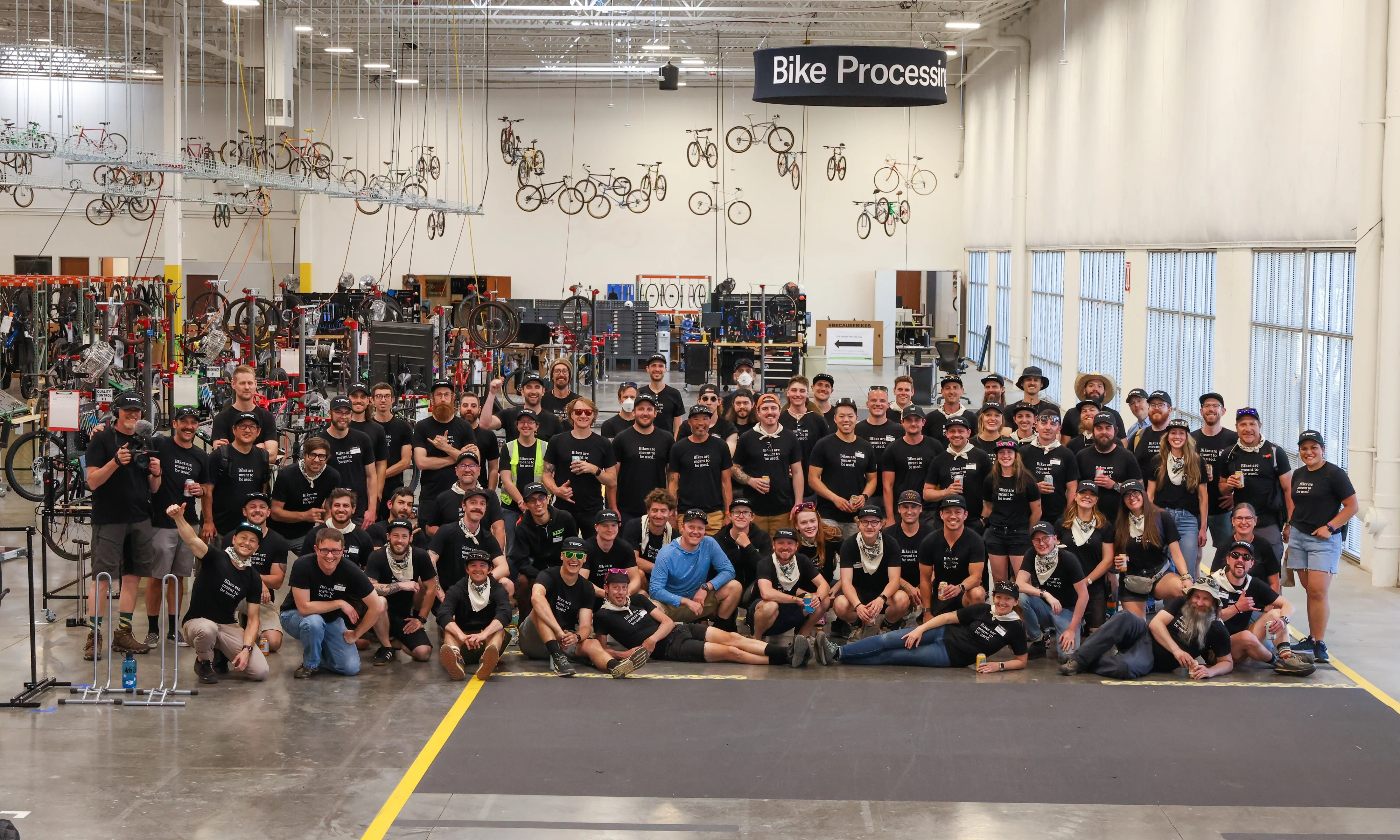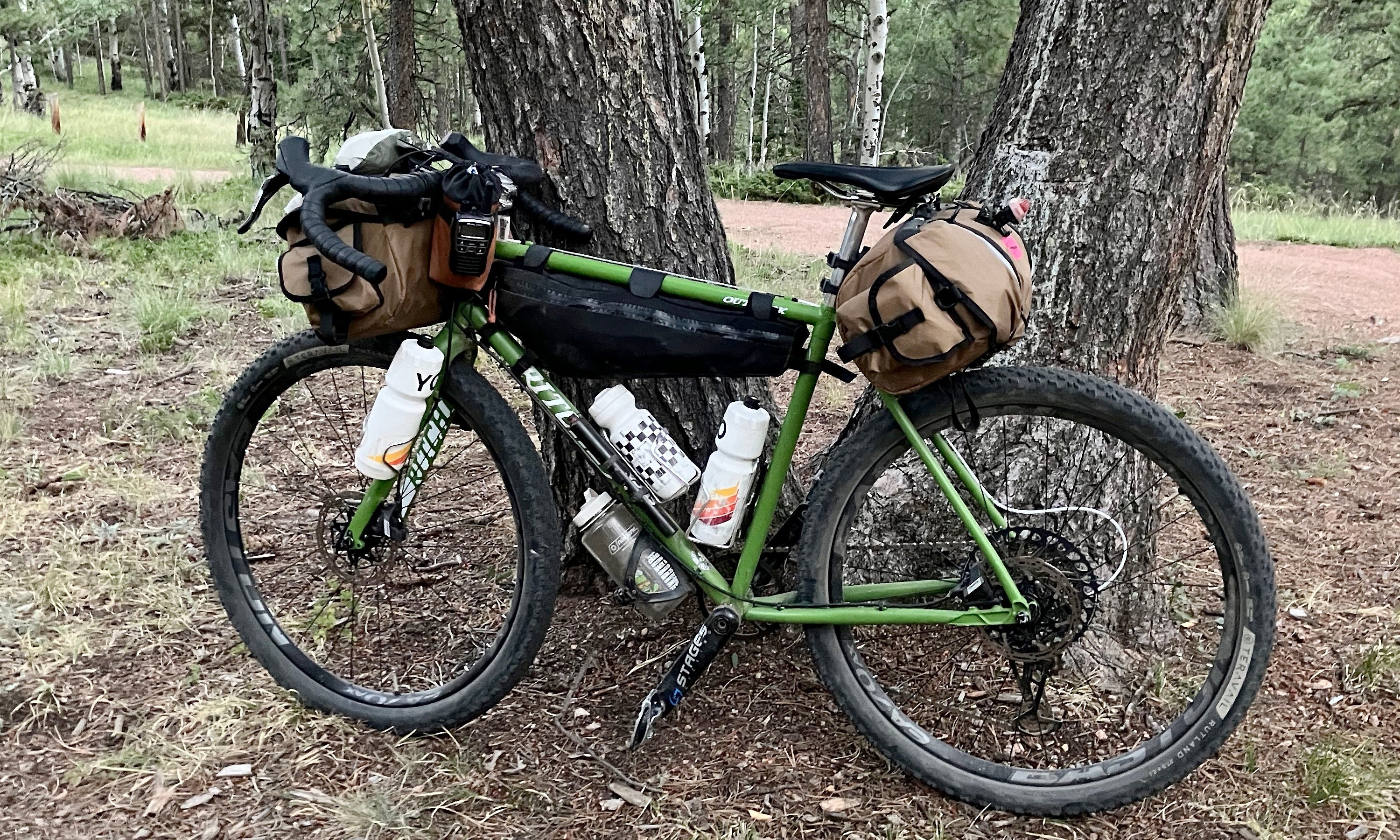Clockwise from top left: Orbea Alma (XC), Trek Top Fuel (Downcountry), Yeti SB150 (Enduro), Santa Cruz Hightower (Trail)
Modern cycling is a sport full of endless categorization. Bikes are designed and engineered to excel at particular types of riding, so bike categories have evolved as a way to neatly define what these bikes are meant to do. But with so much minutia, crossover, and opinion in the mix, bike categories can sometimes get muddy and confusing.
Mountain biking might be the most confusing discipline with the greatest diversity of bike categories. The mountain bike spectrum is huge and there is no single archetypal mountain bike. So if you're shopping for a mountain bike, what are the main mountain bike categories you should know, what are the differences, and what type of riding are they for?
[button]Shop Mountain Bikes[/button]
The Mountain Bike Spectrum: The 6 Modern MTB Types
 To make things simple, the mountain bike spectrum can be distilled into 6 basic categories:
To make things simple, the mountain bike spectrum can be distilled into 6 basic categories:
- Cross Country
- Downcountry
- Trail
- Enduro
- Hardcore Hardtails
- Downhill
There are 3 key traits that separate mountain bikes into particular categories: suspension travel, geometry, and weight. There’s a lot of overlap between categories and there are always going to be outliers in each category, especially when it comes to geometry and weight. Of the three key traits, suspension is the most reliable indicator of what a bike’s intended purpose is, so that will be our main focus.
Hardtail vs. Full-Suspension Mountain Bikes
Many MTB categories will have both hardtail and full-suspension options. The most common hardtails are XC hardtails which use forks in the 100-120mm range and trail hardtails which will use forks in the 120-140mm travel range. There are enduro hardtails too, but they’re a bit of a niche category, and many riders now refer to them as “hardcore hardtails.”
Choosing between a hardtail or a full-suspension often comes down to budget, terrain, and personal preference. In general, hardtails are often cheaper to own and maintain than an equivalent full-suspension. If your terrain isn’t especially technical or gnarly, then a hardtail may suit it better than a full-suspension. XC racers might choose an XC hardtail for smooth courses because it will be lighter and have better pedaling efficiency. Some riders also just prefer the direct feedback, pedaling efficiency, and simplicity that a hardtail provides.
[button]Shop Hardtail Mountain Bikes[/button]
Cross Country (XC) Mountain Bikes

Suspension travel: 0-120mm
Climbing / descending performance: 80% climbing / 20% descending
What are they: XC bikes are made to excel at cross-country riding and racing. They are generally the lightest mountain bikes and have geometry designed for quick and agile handling, especially when climbing. They're designed to cover a lot of ground as efficiently as possible, so XC bikes have the least amount of suspension travel to maximize pedaling efficiency. Most XC race bikes have around 100mm of travel or less, but there are some XC bikes that have increased to 120mm of travel to handle more technical modern XC race courses.
 The Canyon Lux is light and efficient for competitive XC racing and it's raced by Mathieu van der Poel.
The Canyon Lux is light and efficient for competitive XC racing and it's raced by Mathieu van der Poel.
Who are they for: XC racers. Riders who want to maximize climbing speed or speed on flat or rolling terrain. Riders who regularly ride mellower trails and terrain.
Popular examples: Specialized Epic, Trek Supercaliber, Cannondale Scalpel, Scott Spark RC, Orbea Oiz
[button]Shop XC[/button]
Downcountry Mountain Bikes

Suspension travel: 110-130mm
Climbing / descending performance: 65% climbing / 35% descending
What are they: Downcountry is a newer category (some might call it a sub-category of XC) that splits the difference between XC and trail. They can be thought of as XC bikes that have been beefed up with trail components like wider handlebars, shorter stems, and beefier tires. They often have slightly longer and/or slacker geometry too to improve their downhill capabilities. Suspension travel, pedaling efficiency, and weight are closer to the XC end of the spectrum, but downcountry bikes will be slightly more confidence-inspiring on descents than a dedicated XC race bike.
 The Specialized Epic EVO is one of the most popular modern downcountry bikes.
The Specialized Epic EVO is one of the most popular modern downcountry bikes.
Who are they for: XC racers who want a more versatile everyday bike for trail riding. Riders who care about climbing speed or riding long distances but still want a capable descender.
Popular examples: Specialized Epic EVO, Trek Top Fuel, Santa Cruz Blur TR, Transition Spur, Rocky Mountain Element
[button]Shop Downcountry[/button]
Trail Mountain Bikes

Suspension travel: 120-150mm
Climbing / descending performance: 50% climbing / 50% descending
What are they: Trail bikes are the largest and most popular category of mountain bikes. They are generalists and all-rounders made to handle the widest variety of terrain. In terms of geometry and weight, they tend to be right in the middle, splitting the difference between climbing and descending performance. When it comes to travel, trail bikes generally are in the middle, but they also provide a big range of options. Shorter travel options with 120-140mm of travel are generally great do-it-all quiver-killer bikes that work nearly anywhere, while longer travel options with 140-150mm of travel are typically a bit more downhill-focused.
 The Pivot Switchblade is a trail bike with 142mm of travel. It's versatile enough handle longs rides, flow trails, and rough downhills.
The Pivot Switchblade is a trail bike with 142mm of travel. It's versatile enough handle longs rides, flow trails, and rough downhills.
Who are they for: Riders who want one bike that can handle nearly any trail or style of riding. Riders doing a good mix of climbing and descending on anything from mellow flow to technical and gnarly trails.
Popular examples: Specialized Stumpjumper, Trek Fuel EX, Yeti SB130/SB140, Santa Cruz Hightower, Orbea Occam
[button]Shop Trail[/button]
Enduro Mountain Bikes

Suspension travel: 150-180mm
Climbing / descending performance: 20% climbing / 80% descending
What are they: Enduro bikes are made to excel at enduro racing and downhill-oriented riding. They have more suspension travel and slacker and longer geometry than trail bikes to improve downhill capability and increase confidence. They are also built with heavier and tougher components to survive the rigors of enduro racing and downhill riding. Unlike a dedicated downhill (DH) bike, however, enduro bikes are also designed to pedal well, so riders can still pedal uphill to explore and access regular trails.
 The Cannondale Jekyll is an enduro bike using high-pivot suspension. It excels when trails get extra steep and gnarly.
The Cannondale Jekyll is an enduro bike using high-pivot suspension. It excels when trails get extra steep and gnarly.
Who are they for: Enduro racers. Riders who want to maximize their downhill speed and confidence, especially on technical and gnarly trails, but who still need to be able to pedal to the top of the hill.
Popular examples: Specialized Enduro, Trek Slash, Yeti SB150/SB160, Santa Cruz Megatower, Orbea Rallon, Rocky Mountain Altitude
[button]Shop Enduro[/button]
Hardcore Hardtails

Suspension travel: 140-160mm (fork only)
Climbing / descending performance: 33% climbing / 33% descending / 33% steez
What are they: Hardcore hardtails are essentially enduro hardtails, but they’re worth separating out into their own category because they are a more niche category. While many XC racers and trail riders will choose between hardtail and full-suspension options, very few enduro racers and downhill enthusiasts will pick a hardtail. Hardcore hardtail riders are generally looking for a unique riding experience that combines the slack geometry and downhill capabilities of an enduro bike with the direct feel, simplicity, or lower cost of a hardtail. These people generally already know who they are.
 The Commencal Meta HT is one of the most popular hardcore hardtails. It costs a less than a full-suspension trail or enduro bike but can still get rowdy.
The Commencal Meta HT is one of the most popular hardcore hardtails. It costs a less than a full-suspension trail or enduro bike but can still get rowdy.
Who are they for: Riders who want a unique, downhill-focused hardtail to take on technical and gnarly trails.
Popular examples: Norco Torrent, Commencal META HT, Kona Honzo / Honzo ESD, Chromag Stylus / Wideangle / Rootdown, Canfield Nimble 9
[button]Shop Hardtails[/button]
Downhill (DH) Mountain Bikes

Suspension travel: 180-210mm
Climbing / descending performance: 0% climbing / 100% descending
What are they: DH bikes are made for dedicated downhill riding and racing. They have the most suspension travel and the most downhill-oriented geometry. They generally use “dual-crown” suspension forks that provide more travel, more stiffness, and a more supple feel, but these forks also weigh significantly more than regular single-crown forks. Because DH bikes are so downhill-focused, they aren’t good for pedaling up climbs or long rides. They’re generally used at lift-access downhill bike parks and downhill trails that can be accessed by shuttling.
 The legendary Santa Cruz V10 is use by several of the world's best downhill racers.
The legendary Santa Cruz V10 is use by several of the world's best downhill racers.
Who are they for: Downhill racers. Riders who regularly ride at the downhill bike park or shuttle technical and gnarly downhill trails.
Popular examples: Trek Session, Specialized Demo, Santa Cruz V10, Commencal Supreme DH
[button]Shop Downhill[/button]
What MTB Categories Are Missing?
Of course, simplifying the full MTB spectrum down to 6 categories is going to leave some bikes out. Here are some other mountain bike categories that are worth mentioning:
- Fat Bikes
- Dirt Jumpers (DJ)
- Slopestyle Bikes
- Drop Bar Mountain Bikes
- Rigid Mountain Bikes
These tend to be more niche products that appeal to very specific consumers. Two categories that have also been omitted are “All-Mountain” and “Freeride.” The main reason is that this terminology has fallen out of favor, and these categories have too much crossover with trail, enduro, and downhill bikes.
[button]Shop Mountain Bikes[/button]

























